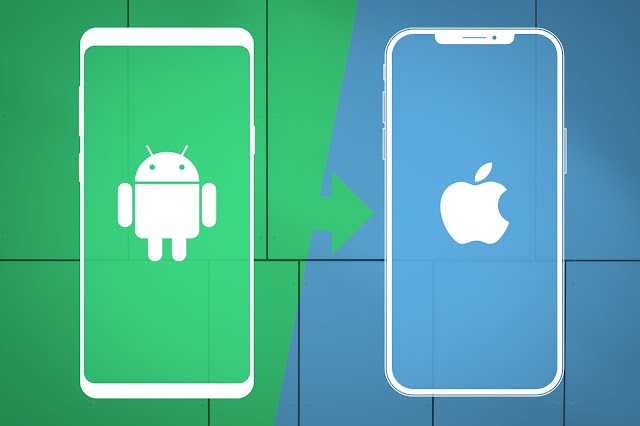Snapdragon 8 Gen 3: Unleashing the Powerhouse of Mobile Chipsets
At the annual Snapdragon Summit 2023, Qualcomm made waves in the tech world by unveiling its much-anticipated flagship mobile chipset, the Snapdragon 8 Gen 3. Positioned to drive the next generation of top-tier Android smartphones in 2024, this chipset promises significant enhancements in performance and features. Let's dive deep into everything you need to know about the Snapdragon 8 Gen 3.
#Snapdragon 8 Gen 3 Specifications:
The Snapdragon 8 Gen 3 brings a powerhouse of specifications, from CPU and GPU performance to AI capabilities and connectivity. Here's an overview of what this chipset has to offer:
#CPU: Octa-core with Kryo Cores:
- 1x 3.3GHz Cortex-X4
- 3x 3.2GHz Cortex-A720
- 2x 3.0GHz Cortex-A720
- 2x 2.3GHz Cortex-A520
#Process Technology:TSMC’s 4nm process
GPU: New Adreno GPU
- Unreal Engine Global Illumination
- Support for 240FPS gaming
Memory Support: LPDDR5X, up to 4.8GHz
Machine Learning and AI: New Hexagon AI Engine
- Generates up to 20 tokens per second
- On-device AI model execution
ISP (Image Signal Processor)
- Semantic Segmentation up to 12 layers
- Dual Camera experience
- Dolby HDR Capture
- Night Vision for Darker scenes
Modem: Snapdragon X75 5G modem
- Up to 10 Gbps Peak Download
- Up to 3.5 Gbps Peak Upload
Wi-Fi Support: Wi-Fi 7
Bluetooth: Bluetooth 5.4, LE Audio, aptX Lossless
Other Features: AV1 Codec Support, NavIC Support, Snapdragon Seamless
#Snapdragon 8 Gen 3: CPU Performance:
The Snapdragon 8 Gen 3 adopts a traditional octa-core CPU design, featuring Kryo cores. While it doesn't utilize the Nuvia-designed Oryon cores, it does incorporate the latest ARM cores. The chip is crafted using TSMC’s advanced 4nm process node.
The CPU configuration consists of a single Cortex-X4 prime core with a clock speed of 3.3GHz, 3x Cortex-A720 cores clocked at 3.2GHz, 2x Cortex-A720 cores at 3.0GHz, and 2x Cortex-A520 cores at 2.3GHz. This configuration is a departure from the usual, as it employs two different clock frequencies for Cortex-A720 cores, improving multi-core performance.
Qualcomm claims that the Snapdragon 8 Gen 3 offers a 30% performance boost and 20% greater efficiency compared to its predecessor, the Snapdragon 8 Gen 2.
#Snapdragon 8 Gen 3: GPU Performance:
In the GPU department, the Snapdragon 8 Gen 3 brings the Adreno 750 GPU, promising a 25% boost in performance and power efficiency. With support for 240FPS gaming and Unreal Engine 5 Lumen system, the new Adreno GPU enhances gaming visuals and realism, offering an experience similar to console-level graphics.
The chip also supports HW-accelerated Ray Tracing, making it ideal for visually demanding applications and gaming experiences. The GPU is set to push the boundaries of mobile graphics further.
#Snapdragon 8 Gen 3: AI and ML Capabilities:
The Snapdragon 8 Gen 3 places a strong emphasis on AI. It partners with Meta to offer on-device, private AI experiences using the Llama 2 model. Users can execute AI models locally, leveraging the power of the Hexagon AI Engine, which can generate up to 20 tokens per second. The AI engine operates 98% faster and 40% more efficiently than the NPU in the previous generation.
This chipset can run over 20 AI models optimized for Qualcomm's AI stack, including OpenAI's Whisper model for voice assistance. Snapdragon 8 Gen 3 is touted as the first mobile SoC to support multi-modality, processing text, images, and speech effectively.
#Snapdragon 8 Gen 3: ISP Enhancements:
The Image Signal Processor (ISP) on the Snapdragon 8 Gen 3 gets a significant upgrade, enhancing image processing and video capture. It enables real-time semantic segmentation, object removal from videos, background changes in images, and video brightening in low-light conditions, known as Night Vision. The ISP handles dual cameras simultaneously, enabling "Vlogger’s view" for easy vlogging.
Qualcomm is taking steps to ensure authenticity in photos by making the chipset C2PA-compliant. It can add metadata information if an image has been manipulated using AI tools, maintaining transparency.
#Snapdragon 8 Gen 3: Connectivity and Beyond:
With the Snapdragon 8 Gen 3, Qualcomm introduces the Snapdragon X75 5G modem, supporting remarkable download and upload speeds. Wi-Fi 7 and Bluetooth 5.4 with LE Audio
provide robust wireless connectivity.
The Snapdragon Seamless feature offers seamless file sharing and screen mirroring between Android and Windows laptops when combined with PC chips like Snapdragon X Elite.
Feature Comparison Table
| Feature | Specification |
|---|---|
| CPU | Octa-core, Kryo CPU |
| Process Technology | TSMC’s 4nm process |
| GPU | New Adreno GPU |
| Memory Support | LPDDR5X, up to 4.8GHz |
| Machine Learning and AI | New Hexagon AI Engine |
| ISP | New Cognitive ISP |
| Camera Capability | Semantic Segmentation up to 12 layers |
| Video Capability | Night Vision for Darker scenes |
| Modem | Snapdragon X75 5G modem |
| Wi-Fi Support | Wi-Fi 7 |
| Bluetooth | Bluetooth 5.4 |
| Others | AV1 Codec Support |
In conclusion, the Snapdragon 8 Gen 3 ushers in a new era of mobile chipsets, focusing on AI, gaming, and imaging advancements. While it may not surpass Apple's A-series chips in single-threaded performance, it excels in GPU, AI, ISP, and connectivity. It's now up to smartphone manufacturers to harness these capabilities and provide users with a smarter and more efficient experience.
The Snapdragon 8 Gen 3 is a powerful contender in the world of mobile technology, and we eagerly await its integration into upcoming Android smartphones.
What are your thoughts on the Snapdragon 8 Gen 3? Share your views in the comments below.



.png)


Comments
Post a Comment